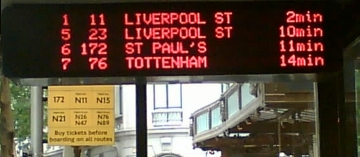It's been a day of heavy snow here in Philadelphia. While viewing the city from its trains and buses was quite pleasant, a snow storm presents significant challenges for transit operators. Depending on the timing of the storm, either buses and streetcars will be stuck in heavy traffic or they will be empty and running on time as nobody goes anywhere.

It makes sense to reduce scheduled service on most lines to match reduced ridership and make more buses (and drivers) available to respond to special needs that will arise - Some lines will require snow routes that add significant time and require an extra bus. Other needs include stalled buses, extra trips, rail replacement shuttles, evacuations and more.
Vehicles take a lot of abuse during a blizzard and that means many may be out of service the following day. Don't run the risk of having to run 70 percent of normal service on several subsequent regular days because you couldn't be bothered making a snow plan.
Plan ahead and communicate. Everything in a snow plan, from route detours to service reductions to plowing busways, can be planned ahead of time and strategically implemented early. That means employee shifts can be different, supervisors will know what to do and what scenarios to watch for, and customers will know where to find a snow route -- but only if the information is made available in advance, such as in timetables and maps.
Meanwhile, we can look to Hampton Roads Transit for a completely inexcusable three-day bus shutdown as the agency is apparently afraid that someone will slip and fall while boarding a bus.




